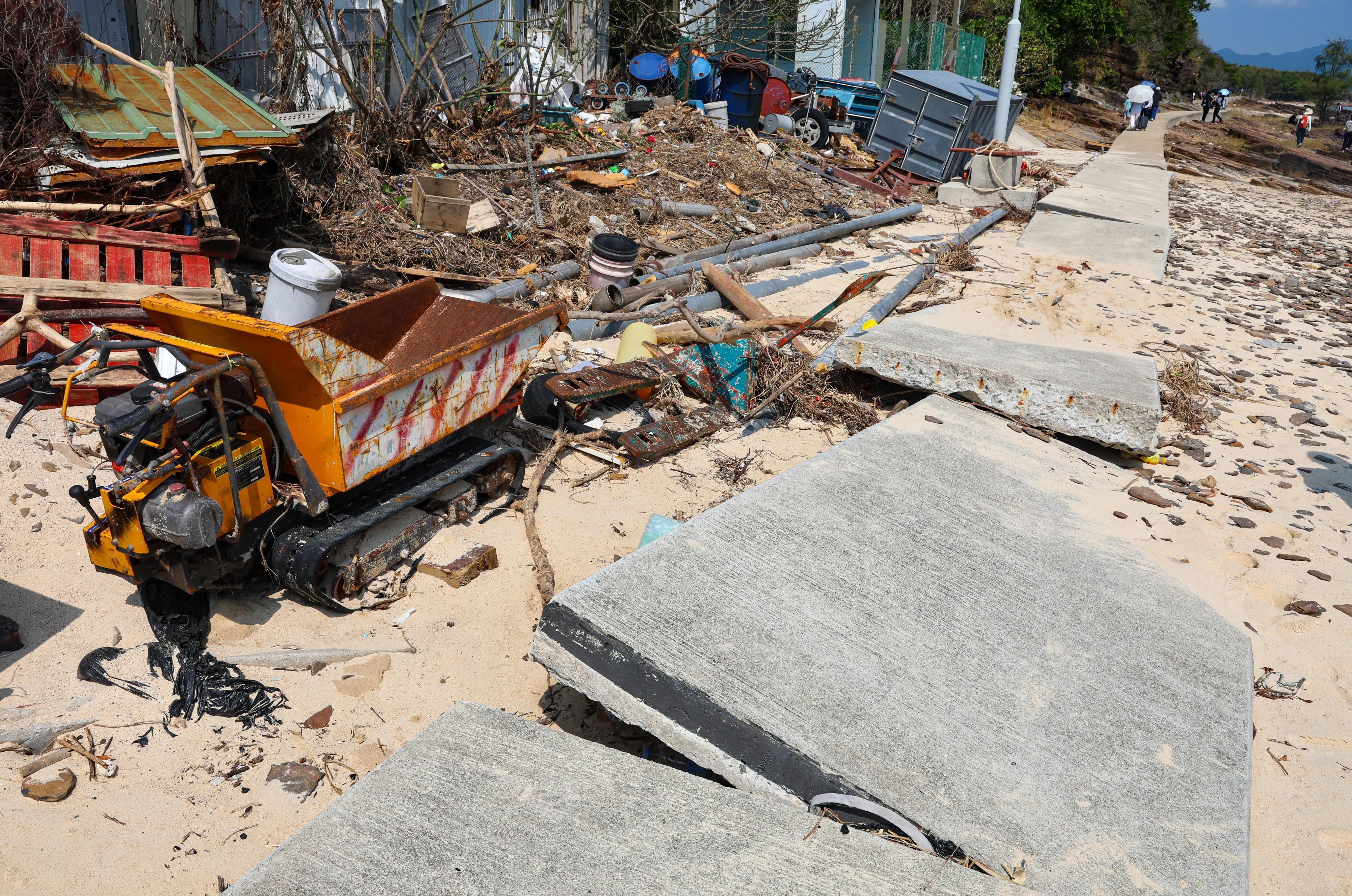By Connor Mycroft
Copyright scmp

A hiking path on a remote Hong Kong island damaged by Super Typhoon Ragasa will require two weeks for repairs, authorities have said, while a green group urged the government to conduct a study on the attraction’s capacity for tourists as it becomes increasingly popular.
The eastern island of Tung Ping Chau, which like much of the city was wrecked by Super Typhoon Ragasa in September, has become a major draw among mainland Chinese tourists seeking more novel experiences.
But when the Post visited on October 7, the day of the Mid-Autumn Festival public holiday and second-last day of the mainland’s National Day “golden week” break, debris such as fishing nets and huge pieces of driftwood were littered on the beach, while parts of the island’s only hiking trail remained blocked.
The state of disrepair on the island, part of the Hong Kong Unesco Global Geopark, left many of the 350 tourists lamenting their decision to visit on that day.
As Tung Ping Chau is listed in government plans to develop island-hopping tours under a blueprint to boost ecotourism, the Post initially approached the Culture, Sports and Tourism Bureau for comment about the state of the island.
The bureau directed inquiries to the Agriculture, Fisheries and Conservation Department, which said only part of the island’s hiking trail within the Plover Cove (Extension) Country Park fell under its jurisdiction.
The department said it had conducted an inspection of its section of the trail on September 29 for tree maintenance work and to clear blockages. It directed the Post’s further inquiries to the Home Affairs Department.
The Home Affairs Department said its Tai Po District Office had carried out on-site inspections of its section of the footpath. It was arranging urgent repair work, which was “expected to be completed in two weeks’ time”.
“Debris on the relevant sections of [the department’s] footpath has already been removed,” it said.
It added that the Tai Po office was also liaising with owners of the adjacent private lots, as well as with other government departments, to clear debris from other parts of the island to facilitate public access.
Among other issues raised by tourists when the Post visited the island was the underdeveloped facilities and amenities, as well as the limited ferry service, which left many waiting for hours in the heat after they had completed the 1.16km (0.72 mile) trail.
Tung Ping Chau currently has four dry toilets, a campsite and a barbecue site, but no running water, electricity or cellular access to Hong Kong networks.
There was only one ferry service to the island in the morning and a return ride to Sha Tin’s Ma Liu Shui in the late afternoon on October 7.
In a reply to the Post about the island’s ferry services, the Transport Department said that Kaitoo Ferry Service had reserved spare vessels during the holiday for any possible surge in demand.
“Based on their observations during the holiday period, the kaito ferry service was able to accommodate the passenger demand, and no additional departure was needed,” it said.
The Transport Department added that it would continue to closely monitor passenger demand and communicate with the ferry operator.
Tung Ping Chau has become a hit on Chinese social media platform RedNote, where it is described as a hidden treasure boasting volcanic landforms, crystal-clear waters and pristine white sand.
But as visitor demand increases, Rico Wong Tze-kang, executive director of Green Earth, urged authorities to conduct a capacity study to gauge the number of visitors the city’s remote islands could handle while preserving the natural environment.
While he welcomed the government’s plan to promote ecotourism, he highlighted recent public concerns about possible coral reef damage at Sharp Island during the golden week holiday.
“There are a lot of visitors coming from the mainland, especially during the long holidays … so we need to be careful about promoting ecotourism in very sensitive areas like the Unesco Global Geopark,” he said.
Wong also urged authorities to combine ecotourism promotion with education so that visitors understood that it was important to preserve the natural beauty of these locations, rather than equipping them with the most modern facilities.
“Ecotourism is not like traditional tourism. That is a message we must convey to visitors,” he said.